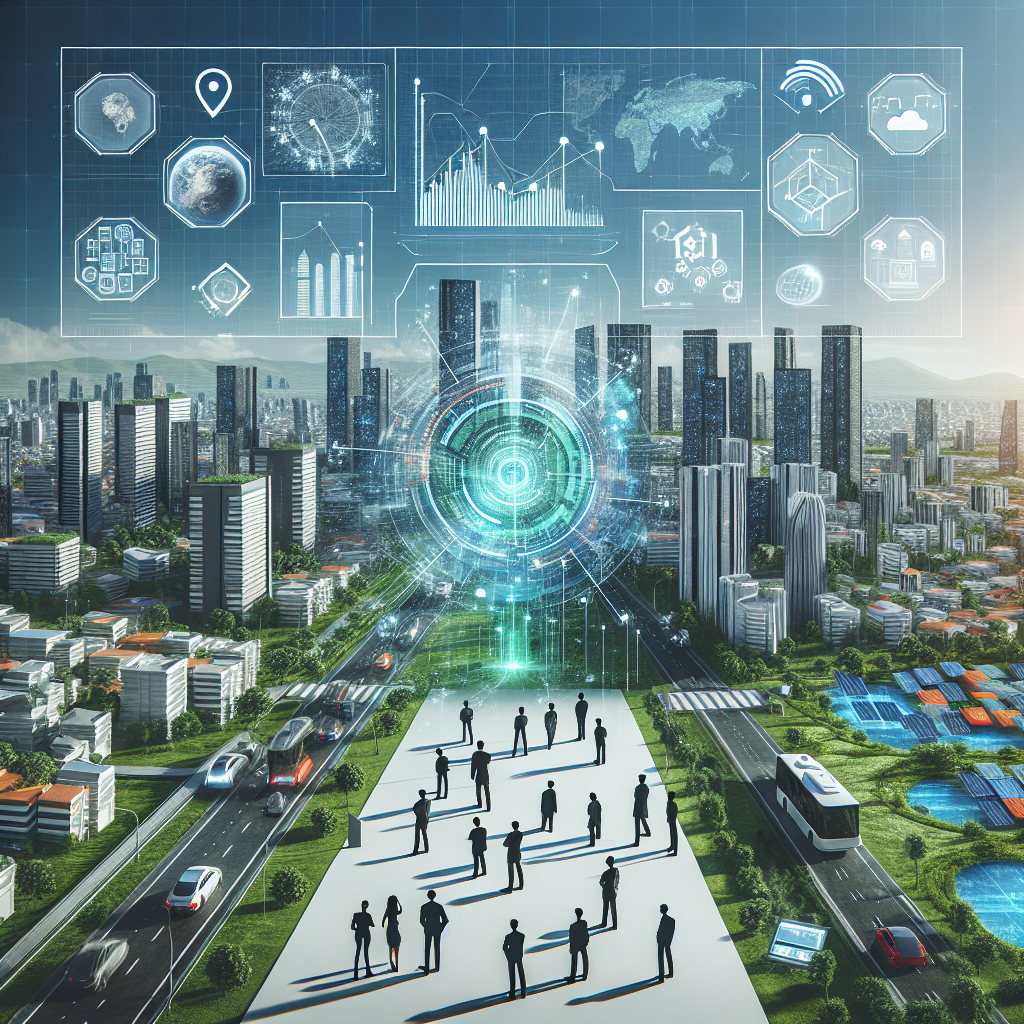Introduction
Urban planning has long been a critical discipline in the development and growth of cities worldwide. As the global population becomes increasingly urbanized, the need for efficient, sustainable, and resilient cities has never been more crucial. Technology plays a pivotal role in this transformation, providing various tools and solutions that enable urban planners to design smarter and more sustainable urban environments.
Smart Cities
The concept of smart cities revolves around the integration of information and communication technologies (ICT) to manage a city’s assets and resources more effectively. This includes everything from traffic management and waste collection to energy distribution and public services.
Internet of Things (IoT)
The Internet of Things (IoT) is at the heart of smart city infrastructure. IoT devices can collect data in real-time, offering insights into how a city operates. For instance, sensors installed on streetlights can monitor traffic flow, while smart meters can track energy consumption. This data allows urban planners to make informed decisions, optimizing resource management and reducing wastage.
Artificial Intelligence (AI) and Machine Learning
Artificial Intelligence (AI) and machine learning algorithms are instrumental in analyzing the vast amounts of data generated by IoT devices. These technologies can predict traffic congestion, assess environmental impacts, and even help in disaster management. AI-driven models can simulate various urban scenarios, providing planners with a range of options for sustainable development.
Geographic Information Systems (GIS)
Geographic Information Systems (GIS) are critical tools in urban planning, enabling planners to visualize, analyze, and interpret spatial data. GIS allows the integration of various types of data (demographic, environmental, infrastructural) into a single platform, helping planners make more informed decisions.
- Spatial Analysis: GIS can analyze spatial relationships and patterns, which are essential for planning transportation routes, zoning, and land use.
- Data Visualization: With GIS, urban planners can create detailed maps that highlight different aspects of a city, such as green spaces, pollution hotspots, and utility lines.
- Scenario Planning: GIS tools allow the simulation of different development scenarios, helping planners understand the potential impacts of their decisions.
Big Data and Urban Analytics
Big data analytics is another technological advancement reshaping urban planning. By aggregating and analyzing data from various sources (social media, mobile apps, public records), urban planners can gain a comprehensive understanding of urban dynamics.
Predictive Analytics
Predictive analytics uses historical data to forecast future trends. In urban planning, this can help anticipate population growth, traffic patterns, and housing needs. This foresight enables proactive planning and the implementation of measures to mitigate future challenges.
Real-Time Data Analysis
The ability to analyze data in real-time is crucial for managing urban environments. For instance, real-time data can help in monitoring air quality, managing public transport, and ensuring public safety. This instantaneous feedback loop allows for prompt interventions whenever issues arise.
Virtual Reality (VR) and Augmented Reality (AR)
Virtual Reality (VR) and Augmented Reality (AR) are emerging technologies that offer new ways for urban planners to visualize and interact with urban spaces.
Immersive Planning
VR can create immersive, 3D models of urban environments, providing planners with a realistic view of their projects. This can be particularly useful for stakeholder presentations, helping communities and decision-makers understand and support planning proposals.
AR in On-Site Consultations
Augmented Reality (AR) can enhance on-site consultations by overlaying digital information onto the physical world. For example, AR can show proposed developments in situ, allowing for better stakeholder engagement and feedback.
Sustainable Urban Development
Technology is also pivotal in promoting sustainable urban development. Sustainable cities aim to minimize environmental impact while enhancing the quality of life for residents.
Renewable Energy
Smart grids, powered by ICT, optimize energy distribution and integrate renewable energy sources like solar and wind. This not only reduces a city’s carbon footprint but also ensures energy resilience.
Green Building
Green building technologies, supported by IoT and AI, assist in designing energy-efficient structures. Smart sensors can monitor a building’s energy usage, enabling real-time adjustments to reduce waste and costs.
Conclusion
The role of technology in urban planning is transformative, offering innovative solutions that make cities smarter, more sustainable, and resilient. From the integration of IoT and AI to the use of GIS and VR, these advancements enable urban planners to design cities that meet the complex demands of modern urban life. As technology continues to evolve, its impact on urban planning will only become more profound, paving the way for the cities of tomorrow.

